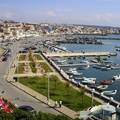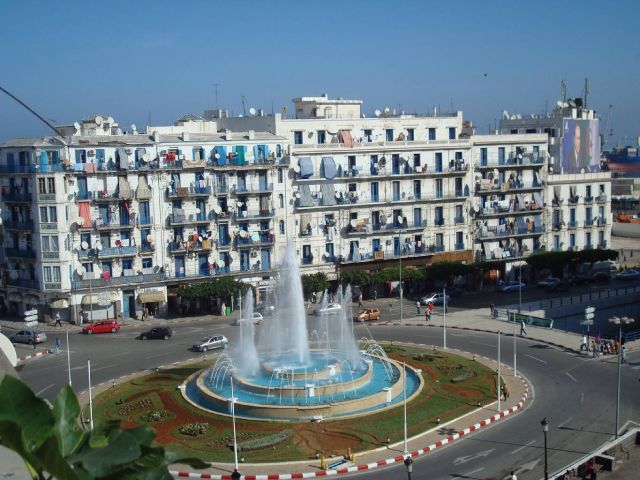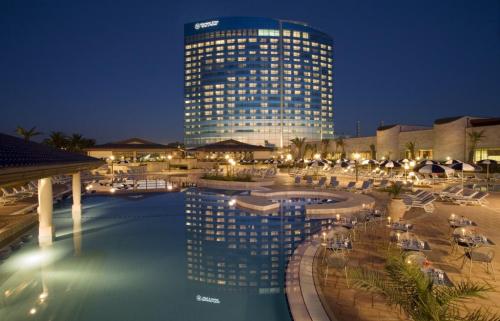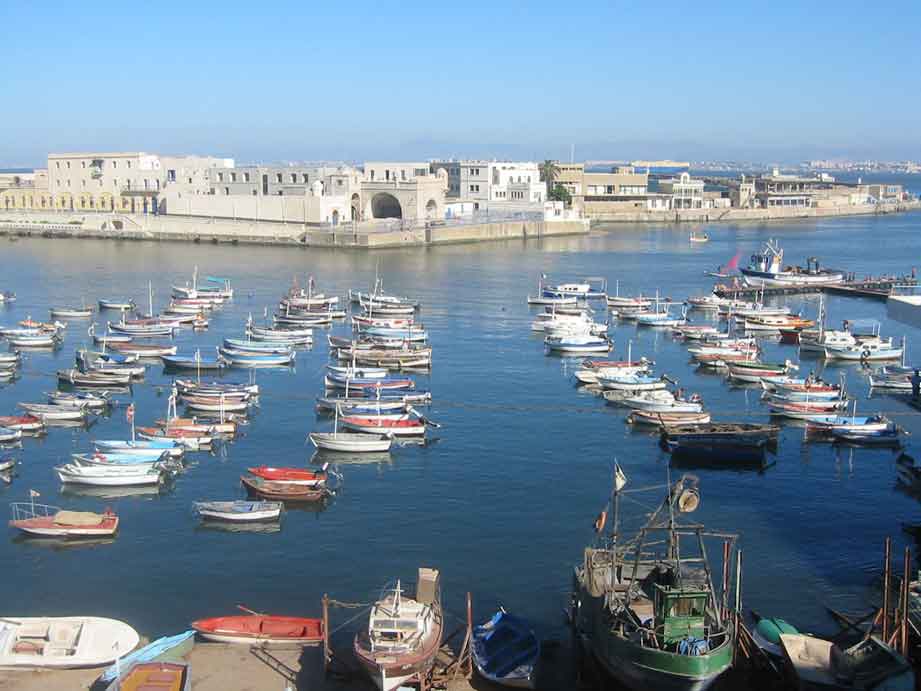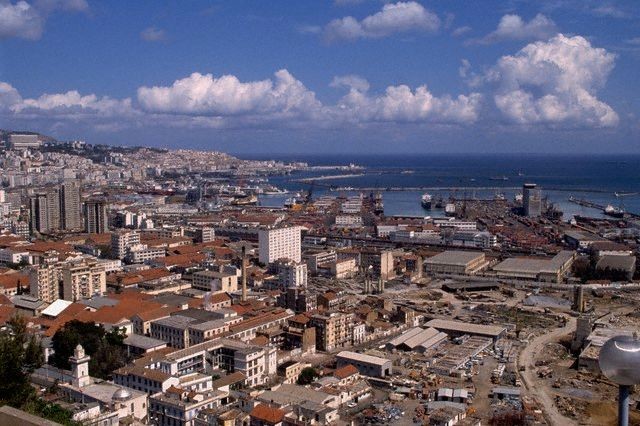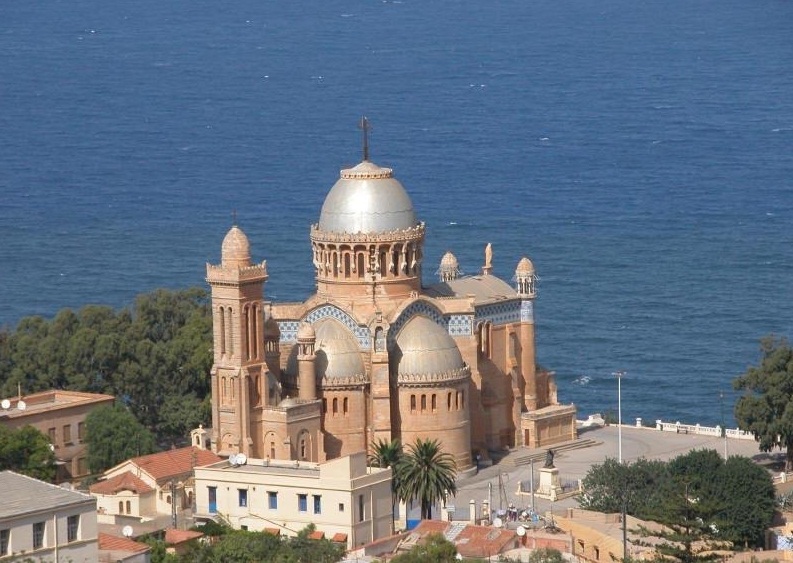World Tourism / The Best Places to Visit in Algeria / Algiers
Algiers
Algiers is the capital and the largest city of Algeria. The town's name comes from "al-Jazairi," which in Arabic means "the island" as before there were four islands close to the city that have become part of the mainland in 1525.
History
The city was founded in the X th century on the site of ruins of a small Roman settlement Ikozium. Originally it belonged to the Arabs, then to the Turks. In the XVI century, Algeria was tried to be taken over by the Spaniards, but they were quickly pushed out. After that, the city became the main base of the Ottoman pirates. In 1830 the French occupied Algeria and made it the capital of the city.
Algiers is the biggest port, economic and cultural center. The capital and its satellite cities (Greater Algiers) have more than 3.5 million inhabitants, most of them Algerians, but there is also the Berbers and the Europeans. It is built on the site of the Hi-Causey Port, founded by the Phoenicians at the end of the IX and then renamed by the Romans in Ikozium. On the ruins of Ikoziuma in 935 Berbers founded the city, known as Al-Jazairi which existed off the coast of the islands (the Arabic "al-Jazairi" - "Island").
Later the name was transformed in Algiers. Since the XI century. Algiers is one of the major ports in the Mediterranean. In the XIII century it was one of the centers of emigration of Moors who were expelled from Spain, the Reconquista. At the beginning of the XVI century. Algiers was owned by the Spaniards. Then, from 1516 to 1830, it was the capital of Algeria and of the Algerian government, which was a part of the Ottoman Empire. In 1830 the French captured the city, making it the administrative center of the colony of Algeria.
More than 130 years, Algeria has been the administrative center of the French colonies in Africa. As a result of the national democratic revolution in Algeria (1954-1962) in 1962 was proclaimed its independence. Since 1962, Algeria - Algerian capital of the People's Democratic Republic, the seat of the President, the Parliament.
Beautiful City
Algeria is a beautiful white town, situated on a hillside amphitheater Dzhurdzhura, stretching along the coast to 16 km. The city directed away from the sea to the tops of mountains is disappearing into the haze. It is surrounded by green gardens, parks and boulevards. Its streets are stretched along the sea, situated one above the other. Its quarters are built up by multi-storey buildings and villas.
There is a house where you can enter on the first floor, by an elevator to the seventh floor and go back in the street again. The architects who worked here, including the famous Frenchman Le Corbusier, was a great master of the terrain. The city abounds with cliffs, steep slopes, precipices, forming islands of wilderness near the center of the capital. The fragments of the moss-covered walls next to the medieval towers of chichi of concrete and glass, referred to as "Mauritania", "Lafayette", "Jolly", and cozy low-rise houses with peaked roofs, reminiscent of the traditions of the past century are one of the remarkable features of the city.
The main trunk of Algeria which runs along the bay from the north to the south, is connected by transverse streets, many of which go to the stairs. In the city there are a lot of stairs made of different materials: stone, iron, asphalt, narrow, wide, open-work. Most of the streets, going from the bottom of the sea to the top, have stairs too. It is not in vain that Algeria at times was referred to as the "city-stairs," the nucleus of the Old City - Casbah (XVI century). This steep, relatively narrow staircase is a continuous trading glad: shops, stalls, hairdressers, bakeries, various workshops. Here, are countless cafes with splendid names "Barack" ("The Blessing"), "Islam," "Revolution," next to the Kasbah - Fallen Heroes Square, where there are just three mosques: Kechaba, Gama'a al- Kebir and the Gama'a al-Jadid.
Kechaba is a mosque of the XVIII century. During the period, the French rule was transformed into a cathedral of Algeria. The centerpiece of the square is Gama'a al-Jadid (New Mosque). The oldest Mosque of Algiers - Jamaa al-Kebir (the Great). It was built in 1096 on the ruins of the Roman Christian Church and the most revered Ikoziuma Muslim capital. From the Kasbah down to the sea of Bab el Oued, was located the district of Saint-Eugene. Above it, on a high mountain is a massive,medieval Crusader fortress- the Catholic cathedral Notre Dame d'Afrique. In front of the cathedral is a monument to Cardinal Lyavizheri, the first archbishop of Algeria, who tried unsuccessfully to baptize almost all the Muslims of North Africa.
In the central part of the Palace of Government are the University of Algiers Corps, the National Library. The Government Palace is a huge 10-story building. In front of the palace a large area is Esplanade Africa, passing in Boulevard Hamisti, which descends wide terraces to the sea. In the center of the boulevard is a monument to those who have fallen in the First and Second World Wars. In Hamisti Boulevard area in front of the Grand-post is the old building of the Algerian main post office, stylized white Moorish palace. If you descent from the Palace of Government to the post of Grand there is downtown Algiers. The district of al-Bear is the area of new homes in the 16-20 floors.
Here is the Palace of Nations, where official receptions are held at the governmental level. Opposite the palace is the villa Joly, a modern 7-storey building, which serves as the residence of the President. Al-Bear is home to many embassies and missions. The most expensive shopping street is Larbi Ben Mhidi. The eastern districts of the city are Mustafa, Hamm, Bellecour. Among the attractions of modern Algeria is the Palace of Culture. It is built in Moorish style, very common in the capital. Its architecture can be traced the succession of generations of masters of national culture, carefully storing the artistic heritage of their ancestors.
Park Riad al-Fath (Victory Gardens) is designed in the tradition of Andalusian gardens with neatly lined stone paths. There are specialized art shops and pavilions with different exposures: the national costumes of different eras, stone carving and plaster works chasers and potters - a sort of museum of folk arts and traditions. Museums have rich capital exposures. Among the most prominent is the National Museum of Antiquities (founded 1897) in Park Freedom, National Museum of Algeria, founded in 1930. The Museum of Prehistory and Ethnography at the villa is the Bardo, which is one of the best specimens in Algeria Moorish architecture. The ethnography section presents examples of clothing inhabitants of various regions of Algeria (Kabylia, the Sahara, Mzaba, Tlemcen), weapons and jewelry. Recreated using original plaster figures look at Algerian harem Turkish era, three women in bright costumes talk to each other.
An interesting is the Museum of the Revolution. It is located at the base of the monument to Shaheed (fallen fighters). These are three huge stone petals, which are clearly visible from various parts of the city. The Monument is highly shot up over the area of Al-Madaniyya. Here are mechanical engineering, food processing, textiles, chemicals, petroleum refining industries. The port city is the main fuel station for the whole maritime region. There is an international airport and a subway.
Others The Best Places to Visit in Algeria .
Others from The Best Places to Visit in Algeria
Algeria is a bizarre mix of different cultures and foreign influences.
Each city in this magical country keeps a lot of pleasant surprises for the curious researchers.
This is the second largest country in the entire African continent, therefore you can be sure that there are enough cities to visit.
It is worth noting that tourism in the region went into decline because of the outbreak of the political conflict in the country, accompanied by a reliable guide, armed with some sage advice, anyone can visit the most attractive areas of Algeria.
Ein Sefra is commonly referred to as `the gateway to the Sahara '.
The town itself is not rich in sights, but nevertheless this trend is noteworthy because it is one of the best places directly bordering the desert.
Algeria is the largest and the most important Algerian town, this area is definitely not to be missed.
This bustling metropolis, which will give you the opportunity to plunge into urban life.
You will find a delicate interweaving of architecture of ancient times to modern buildings, and when you get tired, let your eyes rest on the fresh glow of the Mediterranean.
Algeria is one of the best places to study the French-Arabic culture.
The next line is the amazing Annaba.
Fairly large city, which is largely similar to Algeria.
Annaba offers good food, convenient transportation and wonderful relaxing atmosphere.
Visit the city of Batna gives you the opportunity to see the ancient ruins of the ancient times.
There are many other wonderful places that are worth seeing in Algeria.
Most of the guests in the first few days may experience a slight culture shock of extraordinary experiences that makes this country.
It is worth noting that Algeria is not a lot of luxury service, which is so rich in America and Europe.
But people here are friendly and welcoming, they have an interesting culture, stunning architecture, amazing history and beautiful country - but what else is needed for a wonderful holiday! Currency The Algerian dinar Algerian dinar = 100 centimes, 1 U.
S.
dollar = 70 dinar, 1 euro = 98 dinars.
Geography Algeria is a country in North Africa, in the western Mediterranean basin.
Algeria borders Morocco to the west, Mauritania and Mali to the south-west, Nigeria to the south-east, Libya and Tunisia in the east.
Algeria is the second largest African country, a large portion of the area which lies in the Sahara desert.
Things to Do Excursions and sights of Algeria The ancient city of Algiers spreads like an amphitheater in the hills of the same name in the bay.
Most buildings are constructed of a light construction material which gives the city a festive look.
You can see the distinctive Arab Kasbah in the old town with quaint narrow streets and disorder one-story houses with flat roofs, graceful mosques and other buildings in the oriental style.
Among them are built in the XVII century mosques and tombs and the Siddhi Abdarrahman Jami al-Jadid Mosque.
Still, if anyone dares to visit Algeria, then do it mostly to see the Casbah - the old city, one of a kind left on the Earth.
Full of dark alleys and dead ends, the mysterious city is the heart of Algeria.
Alien and incurious, it shows only blank walls.
However, human and alive, these old neighborhoods remained unchanged since the XVI century.
This is the Medieval world, a world where every step faces night and day, shadows and lights.
Another jewel in the necklace of the Algerian wonders is Constantine, one of the most beautiful and unusual cities in the world.
Located on the north-east of the country, the city is relatively close to the border with Tunisia.
The city suddenly comes up and out of the pile of rocks, canyons and steep cliffs.
The once-rough river Rummel carved in the rock island.
On the island there was a city - Ksantis.
The river was gone, leaving it an empty eternal companion - left and right, top and bottom.
Our Swallow's Nest is vaguely reminiscent of that flying over the land the city.
One of the streets is called: 'Boulevard of the Abyss'.
Among other attractions is the healing power Meskutin Hammam.
It is said to cure all diseases (including diabetes, even).
The water is the hottest after the Icelandic geysers which is 98 degrees.
Tourists are advised to take raw eggs and eat, boiled in the source.
The country's history In ancient times, in what is now Algeria, ancient tribes lived.
On the coast was the Phoenician colony; III-II century BC.
State Numidia.
In the I century BC.
it was conquered by Rome, and in 47 BC.
it was converted into a Roman province; V century was the coastal part of North Africa (including the territory of modern Algeria) conquered the Vandals; VI century - Byzantines expelled the Vandals; VII century - the invasion of the Arabs.
The Arab Caliphate.
Islamization of the country; 1518 - fear of the colonial expansion of the Spaniards seized the coastal cities, the local rulers seek the help of the Turks.
Algeria in its present borders became a province of the Ottoman Empire.
On the coast of Algeria piracy flourishes; 1711 - achieved de facto independence from Turkey, 1830 - the beginning of French colonization.
The best lands of the country were inhabited by the colonists from Europe, 1848 - Algeria is declared a territory of France and it is headed by the French governor-general, July 1, 1962 - the vast majority of Algerians voted for independence, which was immediately recognized by the government of France.
More than a million Europeans and their supporters from among local residents hastily fled the country.
Climate Algeria has a subtropical Mediterranean climate in the north due to the tropical desert of the Sahara.
Winters on the coast are warm and rainy (12 ° C in January), in the mountains cool (2-3 weeks of snow), the Sahara is dependent on the time of day ( at night below 0 ° C, 20 ° C during the day).
Summer in Algiers are hot and dry.
The annual precipitation ranges from 0-50 mm in the Sahara to 400-1200 mm in the Atlas Mountains.
There are frequent dust storms and dry winds from the desert regions.
In this unusual country it is better to go in the autumn months, when the stifling heat begins to subside, and you can move around without risking to be burned alive.
In summer on the Atlantic coast can be very hot, and cold weather can ruin a trip.
Credit Cards Accepted in major cities.
Culture The state actively combats culture in the country.
Berber culture has an important place in contemporary Algeria.
But residents were replenished from the French, who were colonized for many years.
Museums Among the museums in the country the most interesting museum is that of ethnography and ancient history and the National Museum of Antiquities.
The National Museum of Fine Arts is worth visiting too.
All of them are in the capital, the museum in the city of Constantine Cirta is known for its archaeological exhibits.
You can also select the following: in Oran, the stronghold of Santa Cruz, the Great Mosque (XVII century), in Blida, a mosque built by the pirate Barbarossa (Hayraddinom) in Annaba, the ruins of the ancient city Afrodizium (early first millennium BC the city was a center of early Christianity and in 430 St.
Augustine died) In Constantine, the old city walls, built by the Arabs of the sculptures of the Roman period, the Roman citadel, the Sidiel-Cattani (XVIII century) Mosque, the palace of the XIX century, in Biskra – the Tomb conqueror of North Africa Okba (the earliest known inscription in Arabic script in Africa).
In the capital, the XVI century citadel, built by the Turks, and the old city.
Population :32,531,853 people, density - 13.
6 people / km ² .
Areas and Resorts in Algeria Algeria has four major physical regions.
In the north, stretching along the coast and leaving for the south 80 to 190 km, is located Tel consisting of narrow valleys ending part of the Atlas mountain range.
In the Atlas Mountains begins the main river in the country Chelif, which empties into the Mediterranean Sea.
In the south is the river Telya.
The second region is in the High Plateau, a few basins which in the rainy season forms small lakes.
After drying, they are transformed into the salt area, called Schott or chott.
The third region is the part of the Saharan Atlas Mountains.
The fourth, occupying more than 90% of the country is the Algerian Sahara desert stone.
In the south region are the Ahaggar Mountains and the highest point in Algeria the Tahat Mountain (3003 m).
Clothing You should not experiment clothes, else you may be a party scene, trembling with rage when the Algerians can `tear 'Europeans.
For them it is an insult and blasphemy.
Indeed, the Prophet Muhammad was a merchant, and this profession in the Muslim world is honorable and decent, and the money are respected.
Authorities Polity - the republic (in fact, the military regime).
The head of state is the president.
The head of Government is the Prime Minister.
The highest legislative body is the Parliament (unicameral National People's Congress).
Algeria is member of the IMF, the OAU, the Arab League, OPEC.
This president is Abdelaziz Bouteflika.
Food and water Lubia – the Algerian special dish, the flavor that comes from Dersu is a mixture of dried spices to the ground chilli pepper (to move to New Mexico, USA), garlic, caraway seeds and groundnut.
Dersu is the most commonly used in seasoning Algerian cuisine.
Traditionally, a little vinegar is added.
Also traditional is the chicken with green olives (mestalla).
Area 2,381,740 km ².
Shopping Purchases can be performed as in shopping centers and in local shops and at many markets.
Minerals There are significant deposits of iron, zinc, lead, copper, arsenic, mercury, and phosphates.
Rules of Conduct Bargaining is always appropriate and appreciated.
Holidays New Year's Day - January 1, Labor Day - May 1 Memorial Day - June 19 Independence Day - July 5 Anniversary of the Revolution - November 1, Ramadan, Eid al-Fitr, Eid al-Adha, New Year and Mawlid An-Nabi - religious holidays.
Nature and animals The flora of Algeria is quite poor.
Only a few tracts of forests in the north (oak, olive, pine and arborvitae) have survived.
In the Sahara desert, the vegetation, except for the small oases, is virtually absent.
The animal world is also not very diverse.
In recent decades, lions, leopards, gazelles, ostriches have almost entirely disappeared.
The berber macaque, the rabbit, jackals, hyenas, many lizards, 20 species of snakes, a large number of spiders, including phalanx and the scorpion are preserved.
Industry Algeria ranks the fifth in the world.
It’s largest natural gas reserves are oil.
Religion 99% Muslims.
Health Risks The main problem of the country's health - epidemics such as malaria and tuberculosis, malnutrition and trachoma.
Sanitary standards Sanitary-epidemiological situation leaves much to be desired, but there is no need for vaccinations.
Agriculture Cultivation of wheat, oats, and fruits, especially citrus fruits, and vegetables are developed.
Souvenirs A special attraction of Algeria is a large amount of carpet design and manufacturing processes that differ from region to region.
Jewelry and wood products are also included in the list of goods that should be seen.
Transport The length of the railway network of Algeria is of 3973 km, of which 283 km are electrified, road runs 85% of domestic passengers and 73% of all freight in Algeria.
The total length of 104 thousand km of roads, includes paved roads - 71.
7 thousand km.
The transport of passengers is represented by the railways and buses.
4 day trains run from Algiers to Oran, Algeria, one in El Shelif, one from Oran to Tlemcen, and two nights from Algiers to Annaba and Constantine.
Railroads in Laghouat and Biskra do not function.
In Tunisia and Morocco also.
The train costs more than the bus, but it is faster, for example, from Algeria in Oran - 4.
5 hours.
Buses are the main vehicle of Algerians, as the prices for tickets are not so high - one dinar per kilometer.
Night buses do not go in Annaba because of the danger of terrorism.
Roads are qualitative.
Tourism Tours in Algeria Algeria has a great potential for tourism development, in particular, it has thousands of kilometers of excellent beaches, under-utilized at present.
Festivals Exhibitions Ramadan is the ninth month of the lunar calendar, while events of the first revelation of the Prophet Mohammed.
This is also the month when God asks his faithful to fast from dawn until dusk, when they are healthy and do not travel.
After sunset, Muslims stop fasting, and generally begin with something sweet to raise blood sugar as Sunnah (one of the disciples of the Prophet Muhammad) ordered.
The evening is filled with all sorts of pleasures - eating, visiting with family friends, prayers in the mosque.
Flag The national flag of Algeria.
The aspect ratio of 2:3, consists of two vertical stripes of equal width of green and white.
A red star and a crescent are in the center.
The colors of the flag symbolize: Green - Islam, white - purity, red - freedom.
The crescent and the star are the symbols of Islam.
The crescent is more closed than in other Muslim countries, as the Algerians believe that the longer the horn crescent bring happiness.
Date of decision: 03.
07.
1962.
Tips are not accepted.
Language Arabic, French.












